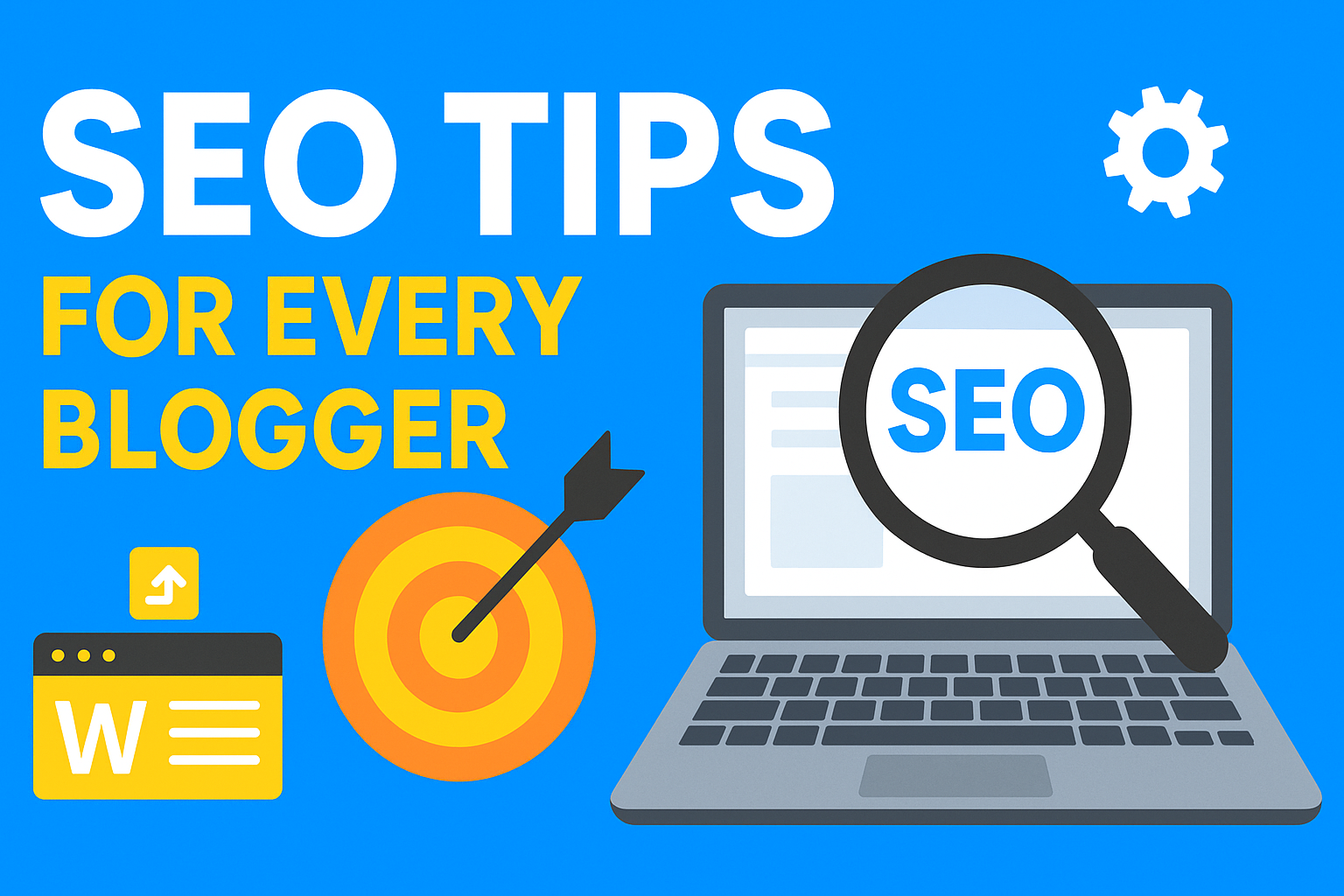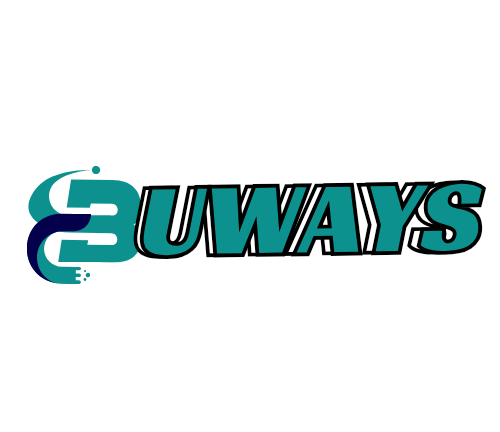In the competitive world of blogging, standing out is more challenging than ever. If you’ve ever poured your heart into a post only to see it languish in the depths of search results, you’re not alone. Mastering the art of SEO is essential for any blogger looking to boost their visibility, attract a loyal audience, and ultimately drive conversions. Whether you’re a seasoned writer or just starting your online journey, understanding the fundamentals of search engine optimization can transform your blog from a hidden gem into a must-read resource. In this article, we’ll explore 10 essential SEO tips every blogger must know to elevate their content and optimize their online presence. From keyword utilization to crafting compelling meta descriptions, these strategies will empower you to navigate the complexities of SEO and connect with readers more effectively. Let’s dive in!
Understanding SEO: A Beginner’s Guide
Search Engine Optimization (SEO) might seem like a daunting term, but its essence is straightforward: it’s about making your content more visible to people who are searching for topics related to your blog. SEO involves a series of strategies and techniques designed to help your blog rank higher in search engine results. This is crucial because higher rankings mean more traffic, and more traffic means more opportunities for engagement and conversion. Understanding SEO is the first step toward turning your blog into a successful online destination.
At its core, SEO is about understanding what people are searching for online, the answers they are seeking, the words they’re using, and the type of content they wish to consume. Knowing this allows you to create content that answers users’ queries in a way that search engines can easily find and understand. This process involves both on-page and off-page SEO techniques. On-page SEO refers to the optimization of individual pages on your website, while off-page SEO involves activities conducted outside the boundaries of your website.
A good starting point for beginners is to familiarize themselves with the basic concepts and terminology used in SEO. Terms like keywords, meta tags, backlinks, and alt text are fundamental to the practice. There are also various tools available that can help you understand and implement SEO strategies effectively. By grasping these basics, you can begin to build a solid foundation for your blog’s SEO and start making informed decisions that will enhance your online visibility.
Importance of Keyword Research
Keyword research is the cornerstone of any successful SEO strategy. It involves identifying the words and phrases that people use when they search for information online. By understanding which keywords are relevant to your niche and have high search volumes, you can tailor your content to meet the needs of your audience and improve your chances of ranking higher in search results.
The first step in keyword research is to brainstorm a list of potential keywords related to your blog’s topic. Think about what your audience might be searching for and use tools like Google Keyword Planner, SEMrush, or Ahrefs to find related keywords and their search volumes. These tools can also provide insights into the competitiveness of each keyword, helping you to prioritize which ones to target.
Once you have a list of keywords, the next step is to incorporate them strategically into your content. This means using them in your titles, headers, meta descriptions, and throughout the body of your posts. However, it’s important to avoid keyword stuffing, which can make your content appear spammy and may lead to penalties from search engines. Instead, aim for a natural, reader-friendly approach that seamlessly integrates keywords into your writing.
On-Page SEO Techniques for Bloggers
On-page SEO is all about optimizing the individual pages of your blog to rank higher and earn more relevant traffic in search engines. This involves various techniques that can help search engines understand your content and determine its relevance to specific search queries. By focusing on on-page SEO, you can ensure that your blog is easily accessible and understandable to both users and search engines.
One of the most important on-page SEO techniques is optimizing your page titles and headers. These elements should include your primary keywords and accurately reflect the content of your posts. This not only helps search engines understand the topic of your page but also makes it more appealing to users who are scanning search results. Additionally, using header tags (H1, H2, H3, etc.) to structure your content can improve readability and help search engines index your pages more effectively.
Another key aspect of on-page SEO is optimizing your URLs. Clean, descriptive URLs that include relevant keywords can improve your search engine rankings and make it easier for users to understand what your page is about. Additionally, optimizing your meta descriptions, which are the short snippets that appear under your page titles in search results, can significantly impact your click-through rates. A compelling meta description that includes your primary keywords can entice users to click on your link and explore your content further.
Crafting Compelling Meta Titles and Descriptions
Meta titles and descriptions play a crucial role in your SEO strategy. They are the first impression users get of your blog when they see it in search engine results, and they can significantly impact your click-through rates. Crafting compelling meta titles and descriptions that accurately reflect your content and include relevant keywords can help draw users to your blog.
Your meta title should be clear, concise, and include your primary keyword. It should give users a good idea of what to expect from your content and entice them to click on your link. Keep in mind that search engines typically display the first 50-60 characters of a title, so make sure your most important information is within this limit. A well-crafted meta title can improve your rankings and attract more clicks.
Similarly, your meta description should provide a brief but informative summary of your content. Aim for around 150-160 characters, as this is the typical limit displayed by search engines. Include your primary keyword and a call to action to encourage users to click on your link. A compelling meta description can increase your click-through rates and drive more traffic to your blog.
The Role of Quality Content in SEO
Quality content is the backbone of any successful SEO strategy. Search engines aim to provide users with the most relevant and valuable information, so creating high-quality content that meets these criteria is essential for improving your search engine rankings. Quality content not only helps you rank higher but also keeps your audience engaged and encourages them to return to your blog.
To create quality content, focus on providing value to your readers. This means conducting thorough research, offering unique insights, and presenting information in a clear and engaging manner. Avoid duplicate content, as search engines can penalize websites that publish the same content as others. Instead, strive to create original, informative, and well-written posts that address your audience’s needs and interests.
In addition to being informative, your content should also be user-friendly. This means using a clear and logical structure, breaking up text with headers and subheaders, and incorporating multimedia elements like images, videos, and infographics to enhance the user experience. High-quality content that is easy to read and navigate can improve your search engine rankings and keep your readers coming back for more.
Optimizing Images for Better SEO
Images are an important part of your blog, but they can also impact your SEO. Optimizing your images can improve your search engine rankings, enhance the user experience, and increase your blog’s visibility in image search results. By taking a few simple steps, you can ensure that your images contribute positively to your SEO efforts.
One of the first steps in optimizing your images is to use descriptive file names. Instead of using generic file names like “IMG_1234,” use descriptive names that include relevant keywords. For example, if you’re writing a post about baking cookies, name your image file “chocolate-chip-cookies.jpg” instead. This can help search engines understand the content of your images and improve your rankings in image search results.
Another important aspect of image optimization is using alt text. Alt text is a short description of an image that helps search engines understand its content. It also provides context for users who are unable to see the image, such as those using screen readers. Including relevant keywords in your alt text can improve your search engine rankings and make your blog more accessible to all users. Additionally, ensure that your images are properly compressed to reduce their file size and improve your page load times.
Building Internal and External Links
Link building is a fundamental aspect of SEO that involves creating connections between your blog and other reputable websites. Both internal and external links play crucial roles in improving your search engine rankings and enhancing the overall user experience. By strategically incorporating links into your content, you can boost your SEO efforts and drive more traffic to your blog.
Internal links are links that connect different pages within your blog. They help search engines understand the structure of your website and the relationships between your content. By linking to relevant posts within your blog, you can guide users to additional information and keep them engaged for longer periods. This not only improves the user experience but also helps search engines index your pages more effectively. To build a strong internal linking structure, ensure that your links are relevant and add value to your content.
External links, on the other hand, are links that point to other websites. Linking to high-quality, authoritative sources can enhance your blog’s credibility and provide additional value to your readers. When search engines see that your blog is connected to reputable sources, they are more likely to view your content as trustworthy and rank it higher in search results. However, it’s important to use external links sparingly and ensure that they are relevant to your content. Overloading your posts with too many external links can be distracting and may dilute the value of your content.
The Impact of Mobile Optimization on SEO
With the increasing use of mobile devices for internet browsing, mobile optimization has become a critical factor in SEO. Search engines, particularly Google, prioritize mobile-friendly websites in their search results. Ensuring that your blog is optimized for mobile devices can improve your search engine rankings, enhance the user experience, and increase your blog’s overall visibility.
One of the key aspects of mobile optimization is responsive design. A responsive design adapts your blog’s layout to fit different screen sizes, ensuring that your content is easily accessible and readable on all devices. This not only improves the user experience but also signals to search engines that your blog is mobile-friendly. To implement a responsive design, consider using a mobile-responsive theme or template for your blog and testing your site on various devices to ensure it displays correctly.
Page load speed is another important factor in mobile optimization. Mobile users are often on-the-go and may have limited patience for slow-loading pages. Optimizing your blog’s loading speed can improve the user experience and reduce bounce rates. This can be achieved by compressing images, minimizing the use of heavy scripts, and leveraging browser caching. Additionally, consider using accelerated mobile pages (AMP) to create fast-loading versions of your blog posts for mobile users.
Analyzing SEO Performance with Analytics Tools
To understand the effectiveness of your SEO efforts and make data-driven decisions, it’s essential to analyze your blog’s performance using analytics tools. These tools provide valuable insights into various aspects of your blog, including traffic sources, user behavior, and keyword rankings. By regularly monitoring your SEO performance, you can identify areas for improvement and refine your strategies for better results.
Google Analytics is one of the most popular and comprehensive analytics tools available. It allows you to track key metrics such as page views, bounce rates, and average session duration. You can also set up goals to measure specific actions, such as newsletter sign-ups or purchases. By analyzing this data, you can gain a deeper understanding of your audience and how they interact with your content. This information can help you identify which pages are performing well and which ones may need optimization.
Another useful tool for analyzing SEO performance is Google Search Console. This tool provides insights into your blog’s visibility in search results, including impressions, clicks, and average position for specific keywords. It also alerts you to any issues that may be affecting your search rankings, such as crawl errors or mobile usability problems. By addressing these issues and optimizing your content based on the data provided by Google Search Console, you can improve your search engine rankings and drive more organic traffic to your blog.
Staying Updated with SEO Trends and Algorithm Changes
SEO is a constantly evolving field, with search engines regularly updating their algorithms to provide better results for users. Staying updated with the latest SEO trends and algorithm changes is crucial for maintaining and improving your blog’s search engine rankings. By keeping abreast of these changes, you can adapt your strategies and ensure that your blog remains competitive in the ever-changing digital landscape.
One way to stay informed about SEO trends and algorithm updates is to follow reputable SEO blogs and websites. Resources such as Moz, Search Engine Journal, and the Google Webmaster Blog regularly publish articles and updates on the latest developments in the SEO world. Additionally, joining online communities and forums dedicated to SEO can provide valuable insights and tips from industry experts and fellow bloggers.
Another important aspect of staying updated with SEO trends is continuous learning and education. SEO is a complex and multifaceted field, and there is always something new to learn. Consider taking online courses, attending webinars, or participating in SEO conferences to expand your knowledge and stay ahead of the curve. By investing in your SEO education, you can ensure that your blog remains optimized and continues to attract traffic and engagement.





